


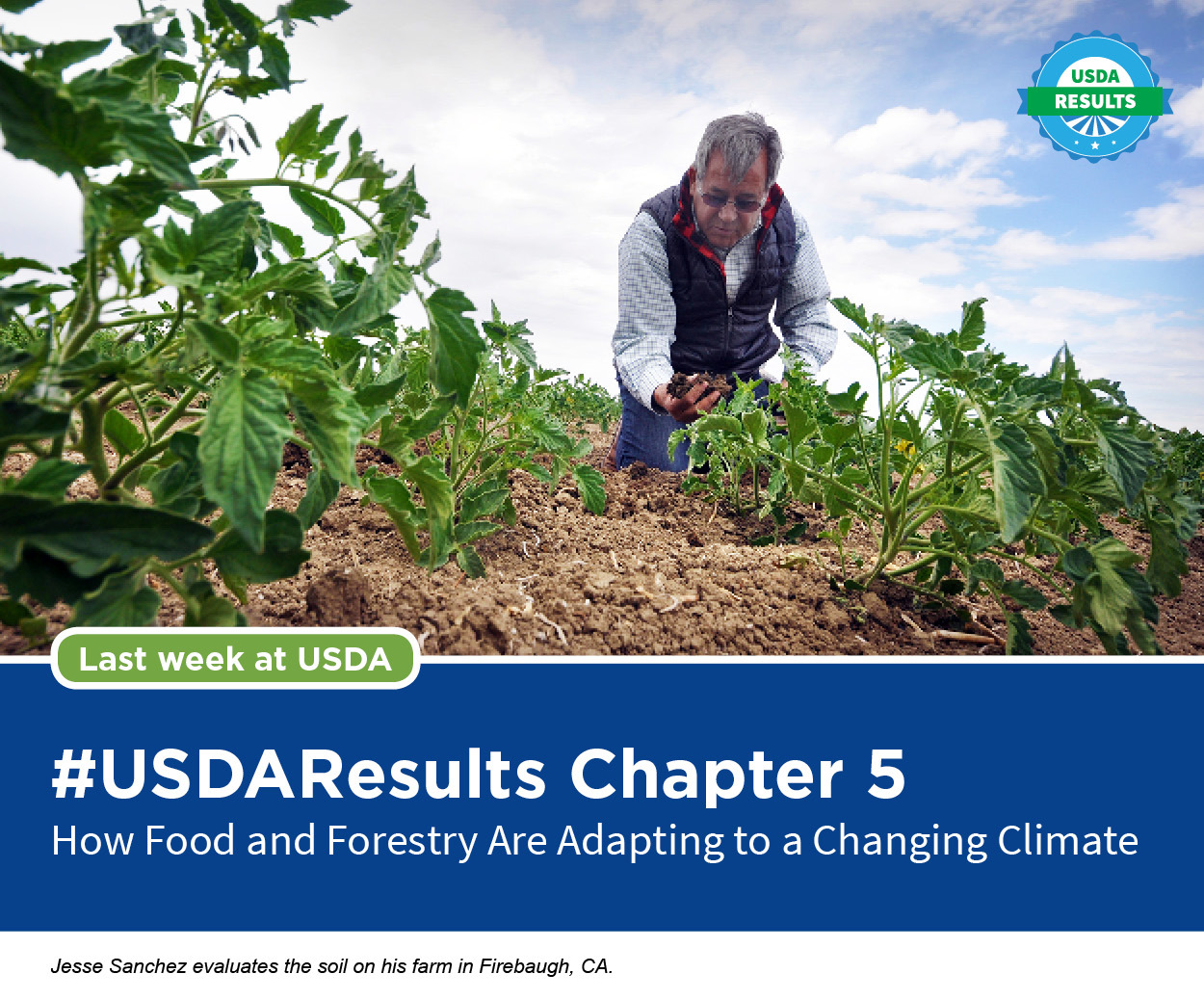
Our nation’s farmers, ranchers, and forest landowners have proven they can achieve extraordinary gains in productivity while acting as good stewards of our natural resources. Along with our partners, we will continue to demonstrate that climate-smart strategies can be voluntary, build resilience, reduce global greenhouse gas emissions and increase carbon storage in our soils and forests while boosting productivity and improving global food security.
Last week we announced the enrollment of more than 800,000 acres in the Conservation Reserve Program (CRP). CRP helps farmers offset the costs of restoring, enhancing and protecting certain grasses, shrubs and trees that improve water quality, prevent soil erosion and strengthen wildlife habitat. Since 1985, USDA’s Conservation Reserve Program has sequestered an annual average of 49 million tons of greenhouse gases, equal to taking 9 million cars off the road and prevented 9 billion tons of soil from eroding, enough to fill 600 million dump trucks.
Join us throughout the month of May as we take a look at how USDA’s approach to collaborative and climate smart policies have supported farmers, ranchers and forest landowners as they adapt in the face of a changing climate.


USDA RESULTS: Follow along on usda.gov, on the USDA blog and by using #USDAResults, or catch up on Chapter V on our Medium site.
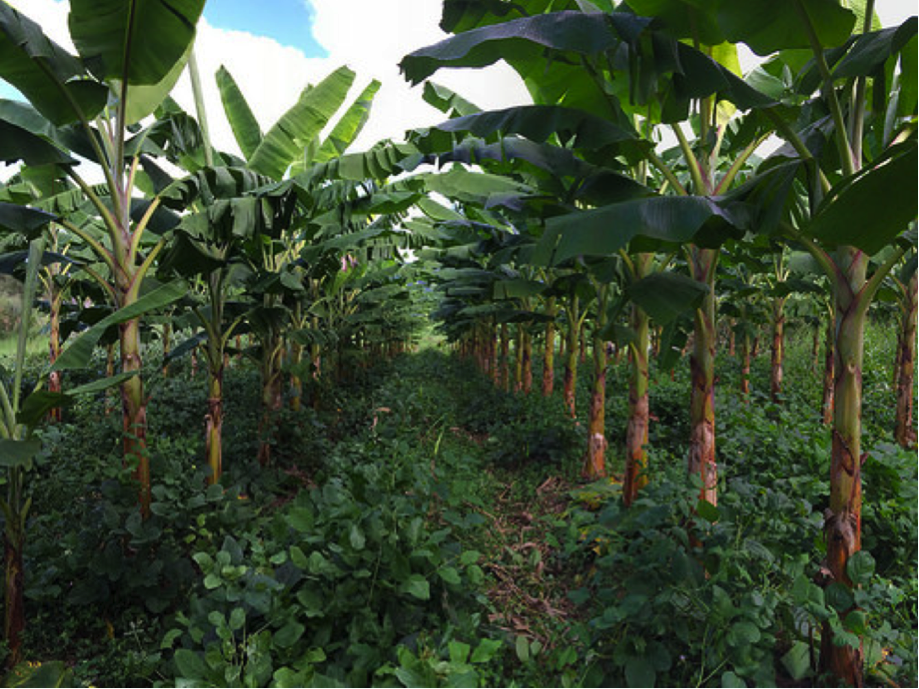
Plantains growing in Gurabo, Puerto Rico, where farmer Duamed Colón is using a legume cover crop (Canavalia ensiformis) to increase organic matter, improve soil health, and reduce erosion and herbicide use. Colón is collaborating with the Caribbean Hub to educate other farmers on sustainable land management practices for climate change adaptation and mitigation through the ADAPTA project.
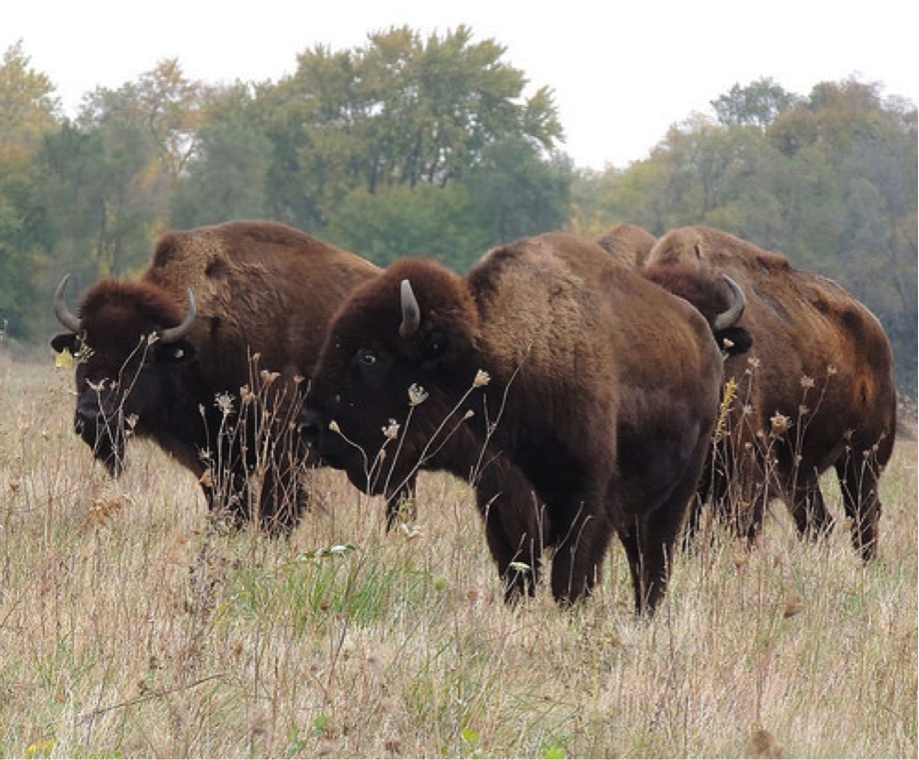
Midewin National Tallgrass Prairie exists today because of a major grassroots efforts by volunteers, partner agencies, businesses and organizations that all worked with the U.S. Forest Service to restore 19,000 acres of farm and industrial land to a mosaic of tallgrass prairie habitat.
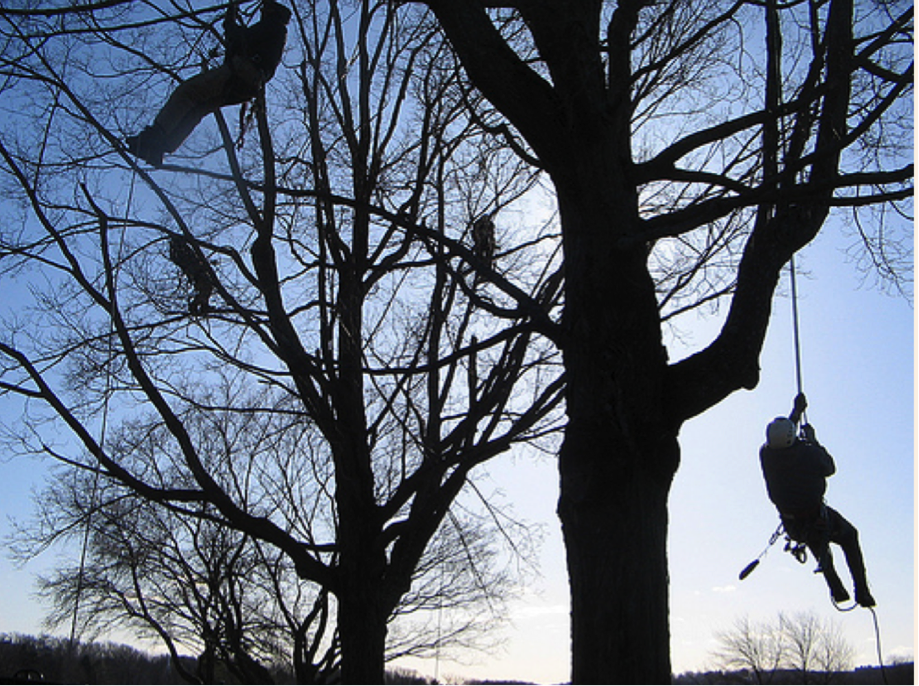
Smokejumpers are helping to fight an Ohio beetle fire.
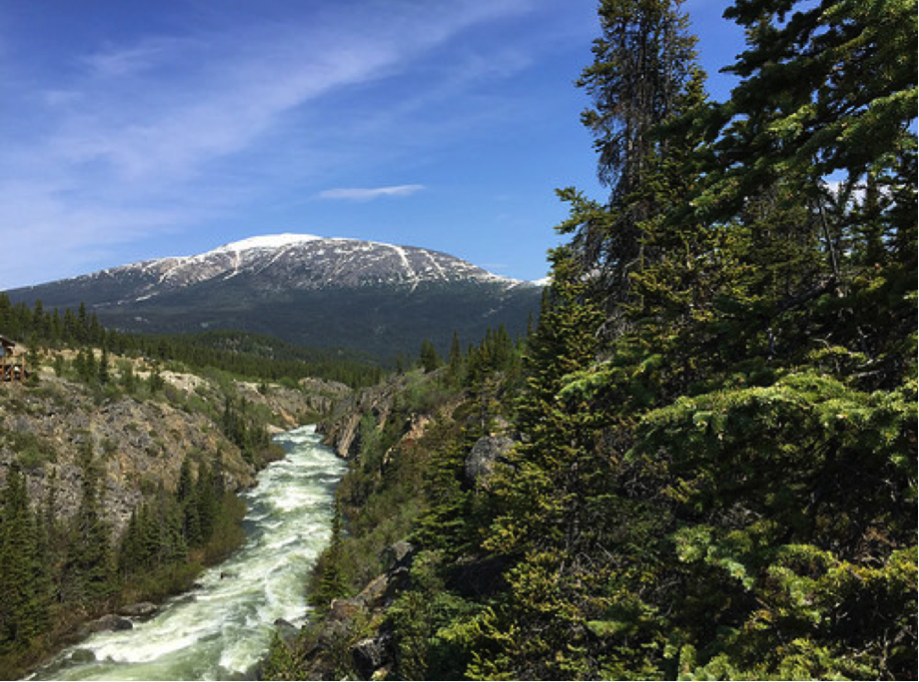
All this month we will be taking a look at what a changing climate means to Agriculture. The ten regional USDA Climate Hubs were established to synthesize and translate climate science and research into easily understood products and tools that land managers can use to make climate-informed decisions.
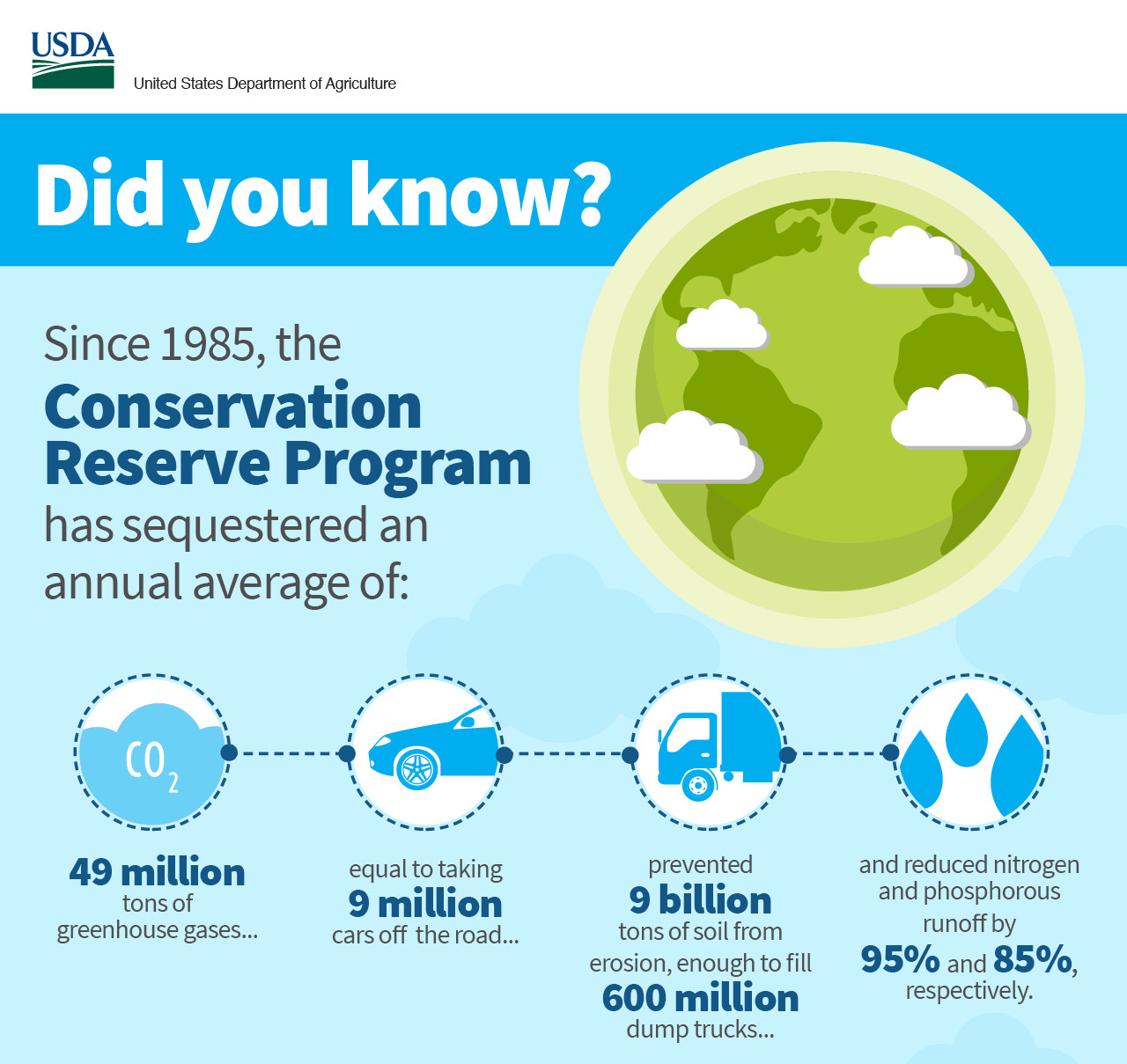
Since 1985, the Conservation Reserve Program has sequestered an annual average of 49 million tons of greenhouse gases, equal to taking 9 million cars off the road and prevented 9 billion tons of soil from eroding, enough to fill 600 million dump trucks.

Addressing Climate Change Today for a Healthier Tomorrow
USDA is bringing tools and solutions to farmers, foresters and ranchers so they have help confronting climate change while working to produce a global food supply adequate to feed the 9 billion people estimated by 2040 while still protecting the earth’s natural resources.
Climate Change and Agriculture in the Americas
The effects of climate change are putting farmers throughout the Latin American Caribbean to the test. From Guatemala to Puerto Rico, rising global temperatures and powerful El Niño oscillations have contributed to patterns of drought and intense rainfall, resulting in crop losses.
USDA Supports Rural Small Business in Missouri
In Fulton, Missouri lies a hidden gem, a meat-lover’s dream to say the least. Starting out as a small processing center, the Brinker family expanded their business, Central Missouri Meat and Sausage, into a retail store and food court. Filled with the aroma of smoked pork, tender beef and a large assortment of specialty sausages, this small business is making a big impact on the central Missouri meat market.
Where the People and Prairie Restore Each Other
Meandering along a rustic trail surrounded by towering prairie grasses and blooming flowers, you feel a sense of simplicity as you come to a quiet overlook that slopes onto a bench where you can observe the activity of birds and small mammals surrounding a still pond. This beautiful prairie landscape leaves the viewer with an appreciation for nature’s wide open spaces.
Smokejumpers Help Ohio Fight Beetle Fire
Smokejumpers are a unique breed. They are people who are willing to jump, really parachute, out of an aircraft to provide a quick attack on forest fires. While smokejumpers are highly trained, experienced firefighters, they are also expert tree climbers. These firefighters usually work in rugged terrain, but travel all over the country to fight fires. Recently they traveled to Tate Township, Ohio to fight a fire of a different kind.
USDA Northern Forests Climate Hub Form Partnership with Natural Resources Canada
There are many reasons landowners value forests – their iconic beauty, cultural connections, wildlife, recreation, and economic opportunities. More reasons and in-depth information can be found in the USDA Forest Service National Woodland Owner Survey.
Beginning Rancher Applies Tribal Traditions and USDA Risk Management Tools to Help Grow Her Business
Shawna Kalama is a proud member of the Confederated Tribes of Warm Springs and the Confederated Tribes and Bands of the Yakama Nation. She’s also a beginning rancher, pursuing her dream the past few years near the Cascade Mountains on the Yakama Indian Reservation in Washington State. Kalama has successfully leveraged several USDA programs to simultaneously support both her entrepreneurial education goals and her growing livestock operation.
Bringing up Better Biofuel
The idea of replacing fossil-based fuel, such as petroleum, with a renewable energy source is enough to get any environmentalist excited. Now, Agricultural Research Service (ARS) scientists have advanced a process to produce crude liquid fuel called “bio-oil” from agricultural waste. The bio-oil is produced by a process called “pyrolysis,” which involves chemical decomposition of plant and other organic matter at very high heat without oxygen. This new technology for producing renewable fuels is called “tail-gas reactive pyrolysis” or TGRP.
In Conversation with #WomeninAg: Joyce Hunter
In an effort to lift up the opportunities available for women in the agricultural field, USDA shares stories of women who are leading the industry and helping other women succeed along the way. In this post, USDA Deputy Chief Information Officer for Policy and Planning Joyce Hunter shares her perspective as a woman in the technology field and how she puts her unique experience and skills to work at USDA.
Summer Meal Programs Fight Hunger with Nutritious Food and Innovation
The following guest blog discusses the importance of USDA Summer Meals Programs, which provide children with healthy food during the summer, when the school meals they depend on disappear. Childhood memories shared by the writer demonstrate how critical healthy meals are to the growth and development of children. USDA’s approaches to making summer meals accessible are also highlighted.
USDA Celebrates National Small Business Week
America’s economy rides on the wheels of small businesses. The U.S. Small Business Administration says more than half of Americans either own or work for a small business. The contributions of these firms will be honored May 1-7 during National Small Business Week — #DreamSmallBiz — and USDA Rural Development is proud to join in the celebration.
Connecting with Local Farmers, One Savory Dish at a Time
There’s nothing better than talking about food over a delicious meal of fresh, locally produced ingredients. I had the chance to do that recently, when I visited Central Foods, a Spokane, Washington, restaurant that sources from local farmers and ranchers. There, I met with stakeholders and producers who are taking advantage of new economic opportunities created by the growing consumer demand for local food. We had a great conversation about how USDA supports local food systems and how we can continue to do so in the future.

Results Announced For Highly Competitive CRP Process
Broadcast Date: Thu, May 5, 2016
The are several possible reasons why 2016 has been the most competitive year for acreage enrollment in USDA's Conservation Reserve Program. (Rod Bain and Farm Service Agency Administrator Val Dolcini)
Actuality: Competitive CRP Enrollment Process
Broadcast Date: Thu, May 5, 2016
Farm Service Agency Administrator Val Dolcini explains some of the reasons he believes this was the most competitive Conservation Reserve Program acreage enrollment period in the program's thirty year history.
Actuality: CRP Announcements at Climate Smart Forum in Colorado
Broadcast Date: Thu, May 5, 2016
Deputy Under Secretary of Agriculture Alexis Taylor telling reporters at a Climate Smart Agriculture Summit at Colorado State University Thursday about the Conservation Reserve announcements she made earlier during the summit.
Winter Wheat Reflects Lower Drought Coverage Numbers
Broadcast Date: Thu, May 5, 2016
The good condition of the winter wheat crop is one indicator of the improvement in the drought situation this year. (Rod Bain and USDA meteorologist, Brad Rippey)
US Area In Drought Shrinks Again
Broadcast Date: Thu, May 5, 2016
April showers have reduced the area suffering drought. (Rod Bain and USDA meteorologist, Brad Rippey)
Topsoil Moisture Mostly Good Nationwide
Broadcast Date: Wed, May 4, 2016
Crops and pastures in many parts of country are benefitting from strong topsoil moisture levels, thanks to Springtime precipitation. (Rod Bain and USDA meteorologist, Brad Rippey)
Forest Service Efforts In Urban America
Broadcast Date: Mon, May 2, 2016
The Agriculture Secretary used a recent Arbor Day event to explain the US Forest Service connection in our nation's urban areas. (Rod Bain and Secretary Tom Vilsack)

USDA gives Purdue $500K to aid food security (Journal Courier)
Purdue University received a $500,000 grant from the U.S. Department of Agriculture to ensure food security while also improving the environment. On Tuesday, the USDA awarded $16.5 million to several projects with the goal to support research and best practices for increasing food production.
Douglass High, USDA look to train a generation of urban farmers (Baltimore Sun)
Six raised garden beds appeared behind Frederick Douglass High School this week containing rows of spinach, broccoli, cucumbers and "supersonic" tomatoes. Nine new trees nearby will one day produce apples, pears, figs and a fruit known as serviceberries. Tending them will be a group of students at the historic West Baltimore school who, along with reading, writing and math, will now get lessons on how to be urban farmers.
USDA Announces Conservation Reserve Program Results (AgNet West)
Agriculture Secretary Tom Vilsack announced the enrollment of more than 800,000 acres in the Conservation Reserve Program (CRP) through the program’s 49th sign up period. Through CRP, the U.S. Department of Agriculture (USDA) helps farmers offset the costs of restoring, enhancing and protecting certain grasses, shrubs and trees that improve water quality, prevent soil erosion and strengthen wildlife habitat.
WSU to receive $2M grant from USDA (Moscow-Pullman Daily News)
Washington State University will receive a $2 million grant to continue research into increased food production through the U.S. Department of Agriculture's Agriculture and Food Research program, USDA Secretary Tom Vilsack told the Daily News on Wednesday.
USDA awards almost $16M in research grants (Agri-Pulse)
USDA announced Wednesday it will grant $15.6 million to universities for research, education and extension programs that the department says will benefit rural America. “Nearly 60 million Americans live in rural areas, and their value and impact through the agriculture industry can be felt both domestically and internationally,” Agriculture Secretary Tom Vilsack said in a release.
Urban Agriculture in Full Bloom in Baltimore at Douglass HS’s Community Garden (Baltimore Afro)
United States Secretary of Agriculture Tom Vilsack visited Baltimore’s Frederick Douglass High School in Baltimore to announce a new online toolkit aimed at aiding urban farmers in growing and marketing their produce. The toolkit is available at usda.gov/knowyourfarmer. It consists of links to technical and financial assistance, including loans and grants, as well as local food directories. He was also there to view the students’ new community garden and to plant its final tree.

 |
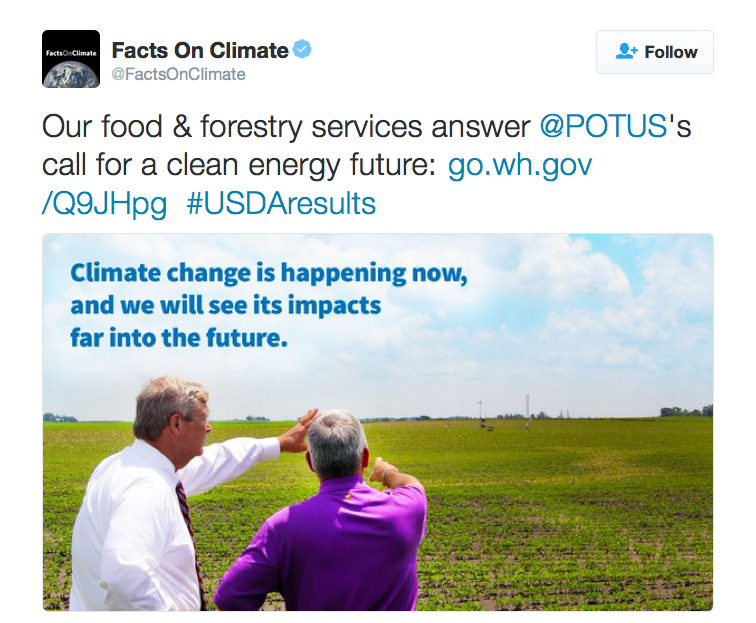 |
 |
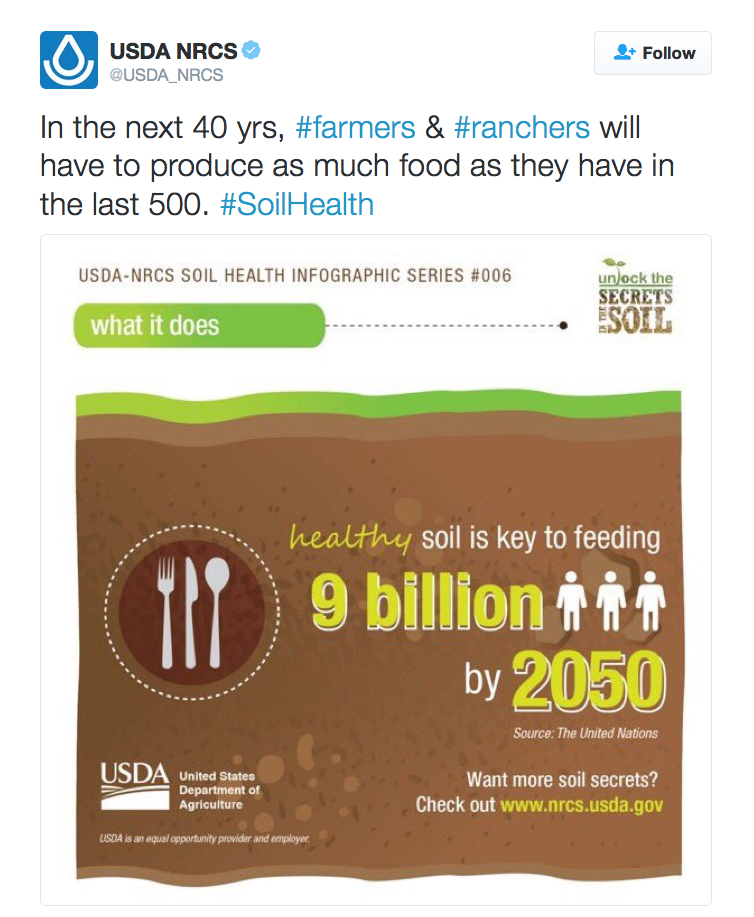 |
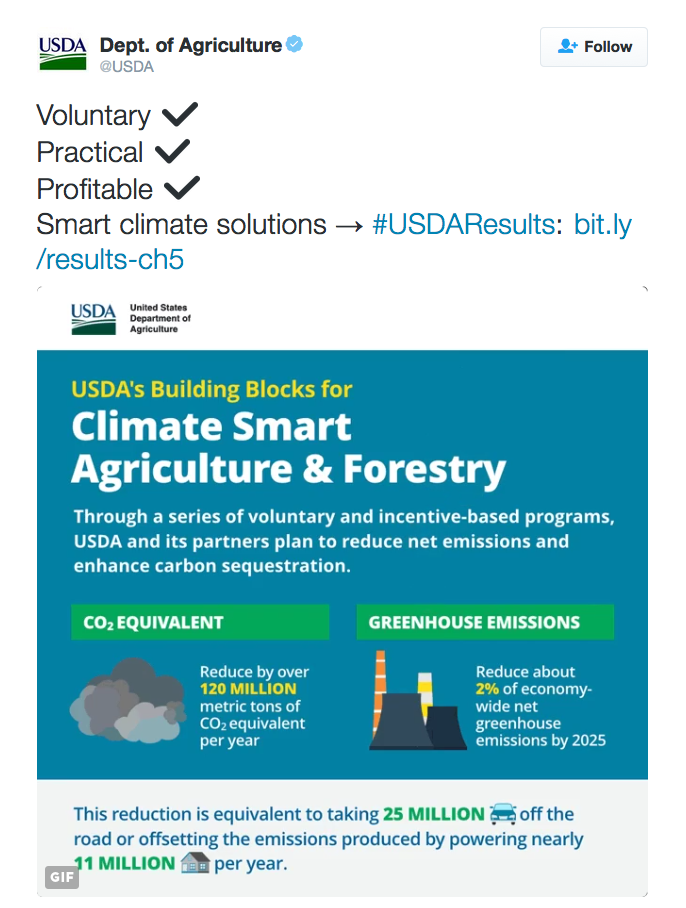 |

|



















